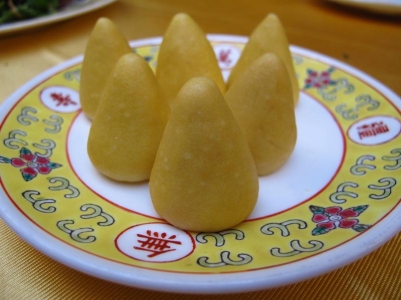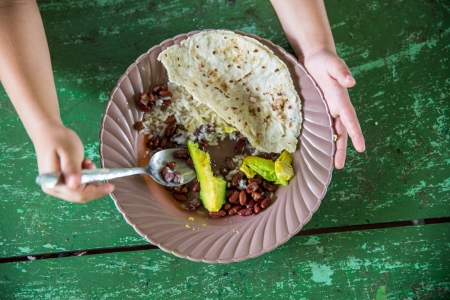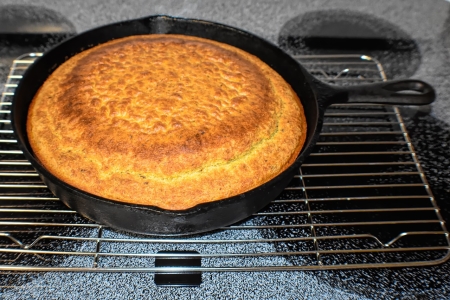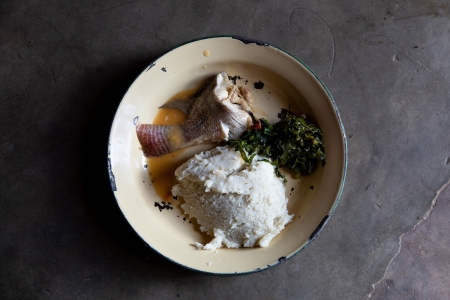Maize Flour: A Global Culinary Journey
Maize flour, also known as cornmeal, may seem like a humble food, but it has a rich history. From its origins in Mesoamerica to its global popularity, this finely ground cornmeal has become a staple ingredient in many cuisines thanks to its nutritional benefits, versatility, and affordability. Join us on a culinary journey as we explore the fascinating world of cornmeal and its role in meals around the world.
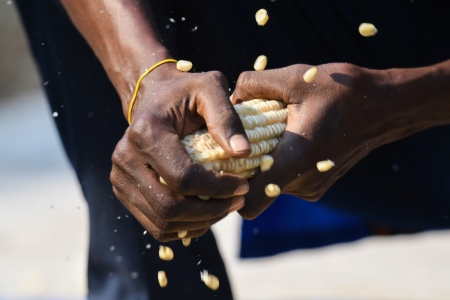
The Nutritional Powerhouse:
Maize flour boasts an impressive nutritional profile, making it a valuable addition to any diet.
- It is a rich source of carbohydrates, providing essential energy for the body.
- It contains fiber, aiding digestion and promoting a healthy gut.
- Packed with vital minerals like potassium, magnesium, and phosphorus, maize flour also supports bone health, muscle strength, and heart function.
- Being gluten-free, it offers a suitable option for individuals intolerant of gluten.
- It contains antioxidants that promote eye health and prevent age-related muscle deterioration.
- It is a source of important vitamins like B3, B1, and B9, contributing to energy production, nerve function, and the formation of red blood cells.
Historical Significance: A Staple of Ancient Civilizations
Maize cultivation dates back around 9,000 years to Mesoamerica, where it was a vital crop for ancient civilizations like the Mayans, Aztecs, and Incas. Maize was not only a staple crop, but also held significant cultural and religious importance for indigenous civilizations. It was not merely a food source, but a symbol of abundance and sustenance, representing the connection between human beings, nature, and the Divine.
The discovery of the Americas in the 15th century marked a pivotal moment in the history of maize flour. When European explorers and colonizers encountered the culinary traditions of the indigenous peoples, specifically their use of maize, they recognized the potential of this versatile and nutritious grain. This quickly led to its cultivation in Europe, Asia, Africa, and beyond, shaping the cuisines of various regions across the globe.
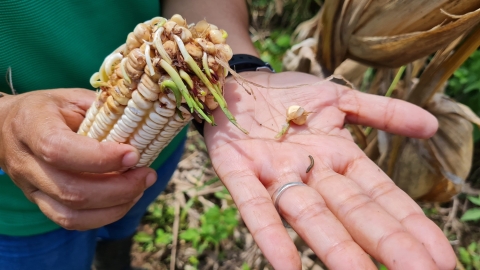
Cultivation and Preparation:
Maize, also known as corn, is a warm season crop, requiring specific climate temperatures for successful cultivation. It thrives in regions with temperatures ranging between 60°F (15C°), and 95F° (35C°), and requires a frost-free growing season of about three months.
Once the corn seeds are planted and the plant begins to grow, it undergoes a pollination process crucial for the development of the maize kernels. The tassels (male flowers) release pollen that fertilizes the silks (female flowers) and once the plants reach maturity, the kernels go through a drying process on the plant.
When the kernels are fully mature, which is indicated by their hardness and color, they are ready to be harvested and can be milled into maize flour by grinding them to the desired texture.
Traditional Dishes Around the World:
- Tortillas (Mexico and Central America): Maize flour is an essential ingredient in making traditional tortillas. These thin discs of dough are prepared by mixing the flour with water and then cooked on a hot cooking surface. Tortillas are a staple food in Central America and serve as a base for tacos, enchiladas, and burritos.
- Polenta (Italy): Italian cuisine embraces maize flour in the form of polenta. By slowly whisking the flour into simmering water or broth, it reaches a thick and creamy consistency known as polenta. This versatile dish can be served as a main dish or as a base for stews, grilled meats, and sauces.
- Cornbread (United States): Cornbread, a common bread in American cuisine, traces its origins to Native America cultures. Made with maize flour, eggs, buttermilk, and sometimes sugar or other flavorings, this baked bread can be a delightful accompaniment to meals or a key component in dishes like cornbread stuffing.
- Ugali (East Africa): Ugali is a staple food in many East African countries, including Kenya, Tanzania, and Uganda. This popular food is made by mixing maize flour with boiling water or hot milk and cooking it until it forms a stiff and thick porridge. Similarly to Polenta, Ugali is often eaten with stews, vegetables, or meat dishes.
- Pap (South Africa): A cornmeal-based dish, Pap is a thick and creamy porridge made by cooking maize flour with water. While similar to Ugali, Pap stands out for its uniquely smooth and creamy texture, which is achieved through a gradual cooking process. This dish is often served as an accompaniment to meats, stews, and vegetables, enhancing the flavors of South African meals.
- Makki ki roti (India and Pakistan): Originating from the northern regions of India and Pakistan, Makki ki roti is a traditional Punjabi flat bread made from maize flour. It is prepared by flattening maize flour dough into round discs, and is commonly served with Sarson ka Saag, a dish made with mustard greens, offering a delicious combination of flavors.
- Wotou (China): While maize flour is not a primary ingredient in Chinese cuisine, cornmeal does find its way into some regional meals. In northern China, for example, maize is used to make a type of steamed or boiled cornmeal bread that has a slightly sticky texture. Cornmeal dishes in China can be prepared in both sweet and savory styles, as some variations may involve adding sugar, coconut milk or other sweet ingredients to create a dessert-like dish.
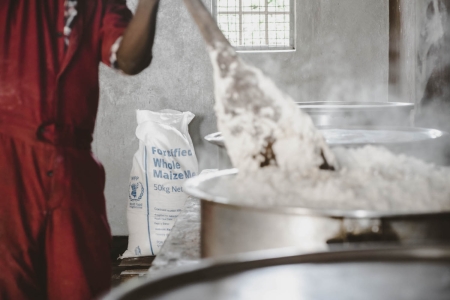
Food fortification is a powerful tool that aims to increase the nutritional value of commonly consumed foods, providing a cost-effective and life changing solution towards achieving healthy and nutritious meals for everyone.
The World Food Programme (WFP) has taken important steps to enhance the distribution of fortified foods, such as maize flour, wheat flour, and rice. In 2020, WFP distributed in its programmes fortified staple meals to 60% of the target population, but their goal is to raise this number to 80% by 2025. This ambitious commitment is aligned with their mission to improve the health and livelihoods of vulnerable families around the world.
In 2021, WFP made significant steps towards its goal, distributing 1,478,081 metric tons of fortified foods. This is equivalent to three billion rations, enough for approximately 17 million people to have their daily staple food consumption for a period of six months.
